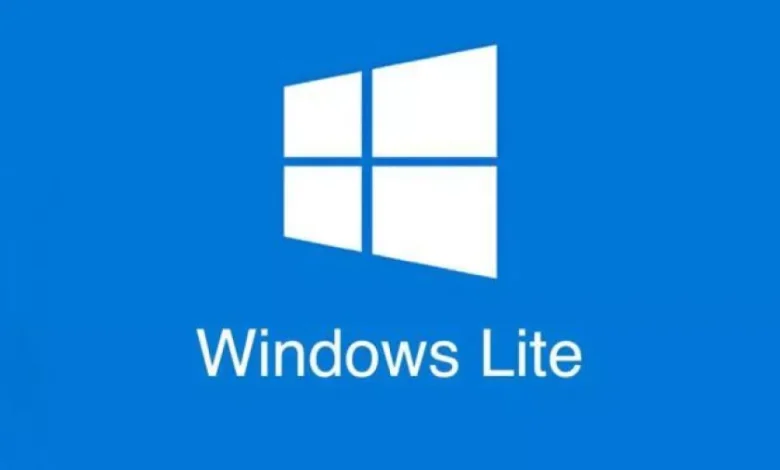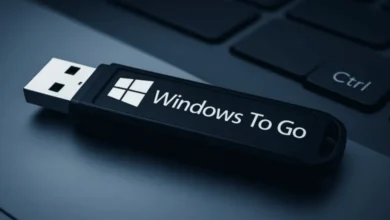Install Windows 10 Lite: A Step-by-Step Guide for Performance

Is your aging computer struggling with the demands of standard Windows 10? Are you seeking a streamlined, speedier alternative that retains the familiar Windows feel? If so, Windows 10 Lite could be the answer to rejuvenate your hardware.
This comprehensive guide explores everything you need to know about this modified operating system. We’ll delve into its features, how Windows 10 Lite can breathe new life into resource-limited devices, and provide clear, step-by-step installation instructions.
What is Windows 10 Lite and Why is it Gaining Popularity?
Windows 10 Lite is essentially a stripped-down, unofficial version of the original Windows 10 operating system. Its core design principle is to be significantly lighter and less demanding on your computer’s system resources.
Often created by independent developers, you might also see versions known as “Tiny10” or “Windows 10 Pro SuperLite.” Regardless of the name, the primary objective is consistent: to provide a fast and smooth Windows 10 Lite experience, especially on older or modestly specced hardware.
This efficiency is achieved by removing many non-essential features, applications, and background services. These components, present in the full Windows 10, can consume considerable processor power, memory (RAM), and storage space. If you want a modern Windows experience without an immediate hardware upgrade, Windows 10 Lite offers a viable path.
Windows 10 Lite System Requirements: Can Your PC Run It?
A major draw of Windows 10 Lite is its significantly lower system requirements compared to the official Windows 10. While specific needs can vary slightly between different modified builds, they are generally very accommodating to older hardware.
Typically, your device will need:
- Processor: A 1 GHz or faster processor, or a dual-core Intel processor.
- RAM: Some Windows 10 Lite versions can function with just 1 GB for 32-bit or 2 GB for 64-bit. However, 2 GB (or ideally 4 GB) is recommended for a smoother experience.
- Hard Disk Space: Approximately 16 GB for a 32-bit OS or 20 GB for a 64-bit OS. Some extremely trimmed versions might require as little as 5 GB.
- Graphics: A DirectX 9 compatible graphics card or later, with a WDDM 1.0 driver.
- Display: A minimum resolution of 800 x 600.
Why Choose Windows 10 Lite? Exploring Key Features and Benefits
The most compelling reason users opt for Windows 10 Lite is the dramatic performance improvement, particularly on less powerful computers. Speed and lightness are its defining characteristics.
Enhanced Speed and Responsiveness
By removing unnecessary components, Windows 10 Lite runs faster and consumes fewer system resources. This translates directly into better overall system responsiveness and quicker application launch times, making it an excellent choice for reviving old PCs.
Smaller Installation Footprint
Windows 10 Lite boasts a significantly smaller installation size, freeing up valuable hard drive space, which is often at a premium on older devices.
Improved Performance for Demanding Tasks
Gamers and users running relatively demanding applications may notice performance gains due to the efficient resource conservation offered by Windows 10 Lite.
Familiar User Interface
Despite the modifications, Windows 10 Lite typically retains the familiar Windows 10 interface. This ensures an easy transition and a minimal learning curve for users already accustomed to Windows. It also maintains compatibility with most Windows applications.
Activation Considerations
Some modified Windows 10 Lite versions may come pre-activated or have less stringent product key requirements. However, it’s vital to be aware of the legal implications associated with using unofficial, modified operating systems.
Before You Install: Important Drawbacks and Risks of Windows 10 Lite
While Windows 10 Lite offers many advantages, it’s crucial to understand its potential drawbacks before proceeding with an installation.
Missing Features
The stripping-down process can lead to the removal of features that some users might find essential. This could include advanced system tools, the Cortana voice assistant, or even Windows Defender.
Potential Security Vulnerabilities
The removal or disabling of core security components like Windows Defender can make a Windows 10 Lite system more susceptible to malware. Installing robust third-party antivirus software becomes even more critical.
Update Complications
Obtaining system updates might be more complex or less seamless compared to official Windows versions. Manual updates may be required, and the consistency of these updates can vary.
Lack of Official Support
Being unofficial versions, Windows 10 Lite installations do not come with direct technical support from Microsoft. Users rely on community forums or the creators of the specific Lite version for assistance.
How to Install Windows 10 Lite: A Step-by-Step Guide
Understanding the basics and potential risks of Windows 10 Lite is key. Once you’re ready, let’s walk through the installation process.
Preparing Your Toolkit: What You’ll Need for Windows 10 Lite Installation
To successfully install Windows 10 Lite, gather these essential items:
-
The Windows 10 Lite ISO.
- A USB flash drive with a capacity of at least 8 GB; ensure it doesn’t contain any important files, as it will be completely formatted during the setup process.
- The computer on which you intend to install Windows 10 Lite.
- (Optional but recommended) An installation file for an internet browser like Google Chrome or Firefox, as some Windows 10 Lite versions might come without a default browser installed.
Step 1: Downloading Your Windows 10 Lite ISO and Tools
Begin by downloading the specific Windows 10 Lite ISO file you’ve chosen. Again, prioritize a trustworthy source to avoid security risks. Next, download Rufus from its official website. If desired, also download the installer for your preferred web browser.
Step 2: Creating a Bootable USB Drive for Windows 10 Lite with Rufus
With your downloads complete, connect the USB flash drive to your computer and run Rufus.
- In Rufus, under “Device,” ensure your USB drive is selected.
- Click the “SELECT” button next to “Boot selection.”
- Browse to and select your downloaded Windows 10 Lite ISO file, then click “Open.”
- Rufus usually auto-configures other settings. However, verify the “Partition scheme” (MBR for older BIOS, GPT for newer UEFI) and “Target system” are compatible with your target PC. Default settings often work if unsure.
- Click “START.” A warning will appear stating all data on the USB drive will be erased. Click “OK” to proceed.
- Wait patiently for the process to complete.
Step 3: Configuring Your PC’s BIOS/UEFI to Boot from USB
Once the bootable USB is ready, restart the computer designated for Windows 10 Lite installation.
As it powers on, repeatedly press the designated key (Common keys: F2, F10, F12, Delete, Esc) to enter BIOS/UEFI settings. This key varies by manufacturer/model; search online for “[your device name] BIOS key” or check its manual.
Inside BIOS/UEFI, find the “Boot,” “Boot Order,” or “Boot Sequence” section. Change the boot order to make the USB drive your first boot device. Save settings and exit. The computer will restart.
Step 4: The Windows 10 Lite Installation Process
If set up correctly, your PC should boot from the USB, displaying the Windows 10 Lite installation screen.
- Follow on-screen prompts: select language, time/currency format, and keyboard input.
- Accept license terms (if shown).
- For installation type, choose “Custom: Install Windows only (advanced)” for a clean Windows 10 Lite install.
- Select the partition for installation. Crucial: If this partition has important data, ensure it’s backed up, as you might need to format it (erasing all content). You can also delete/create partitions here.
- Click “Next” to start copying files and installing Windows 10 Lite. The PC will restart several times.
- After installation, follow prompts to create a user account and configure initial settings (computer name, network).
- Once at the Windows 10 Lite desktop, remove the USB drive.
- Install your preferred browser (if downloaded earlier) and other essential programs.
Optimizing Your Windows 10 Lite Experience Post-Installation
With Windows 10 Lite successfully installed, a few extra steps can further enhance your experience:
- Install Drivers: Check for and install all necessary hardware drivers, especially for graphics, sound, and network adapters. Find these on your computer or component manufacturer’s website.
- Install Antivirus: If your Windows 10 Lite version lacks adequate protection or if Windows Defender was removed, install robust antivirus software immediately.
- Install Essential Software: Install your preferred internet browser and other programs you need for daily tasks.
- System Tweaks: Explore system settings to disable any unneeded services or visual effects to further boost the responsiveness of Windows 10 Lite.
Conclusion: Is Windows 10 Lite the Right Choice for Your PC?
Windows 10 Lite offers a compelling and practical solution for users aiming to run a modern, fast operating system on older or resource-constrained computers. By intelligently removing non-essential components, these modified versions can deliver a significant boost in performance and responsiveness.
However, it’s vital to be fully aware of the potential downsides. These include the possible removal of features you rely on, potential security concerns if not handled with caution, and the absolute necessity of sourcing installation files from trusted locations to avoid issues.
By carefully following the detailed steps in this guide, you can install Windows 10 Lite safely and leverage its advantages. Always remember the golden rule: back up your important data before making any major changes to your operating system. Ultimately, Windows 10 Lite might just be the breath of fresh air your old device needs to feel new again.
